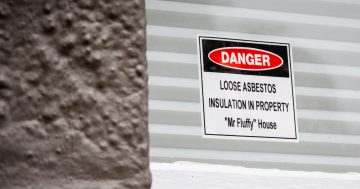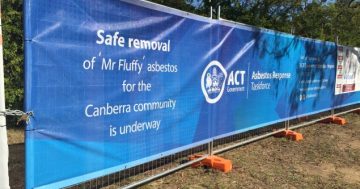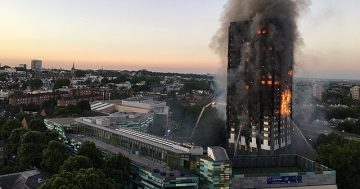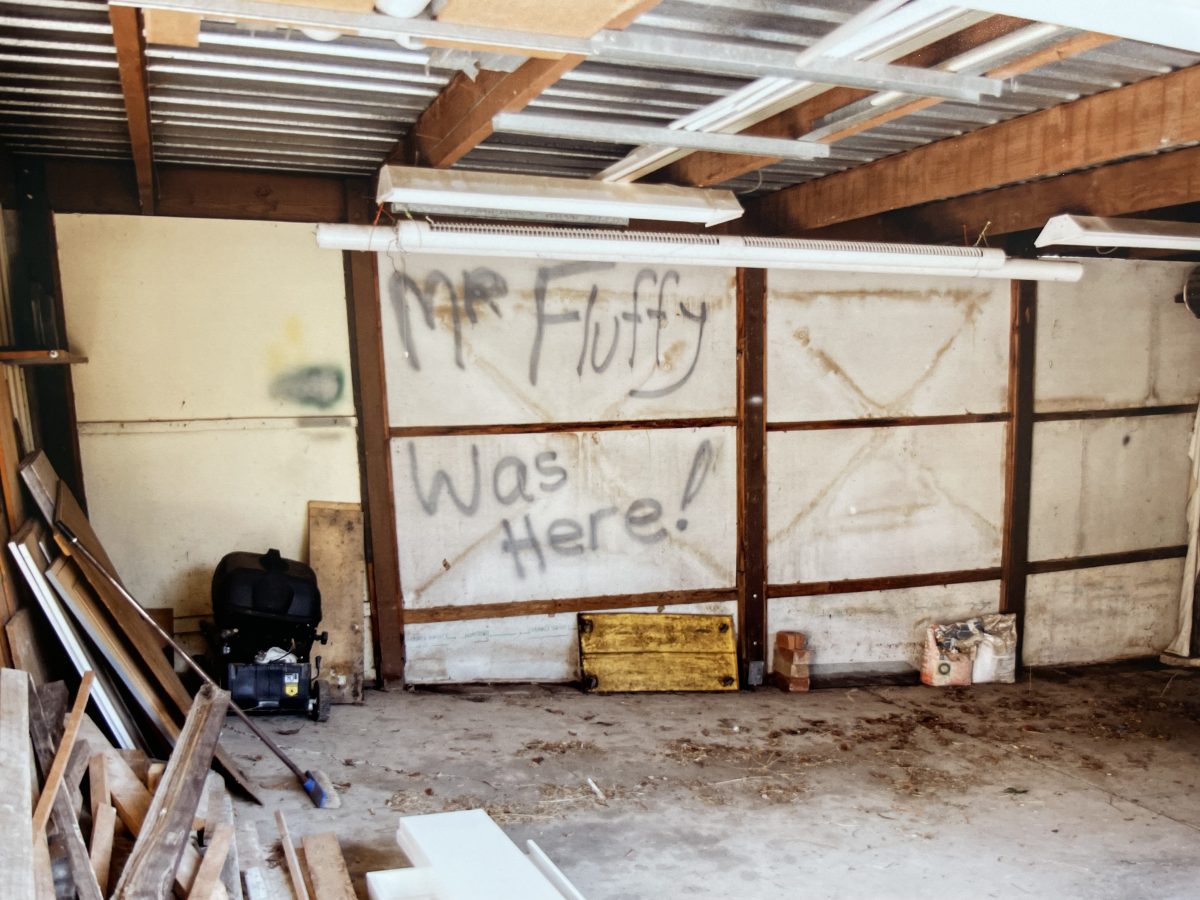
Mr Fluffy’s initially benign presence in Canberra turned potentially deadly as the effect of asbestos was better understood. Photo: G Jacobs.
A pile of keys, shattered multi-coloured tiles and a mountain of memories. The Canberra Museum and Gallery’s Mr Fluffy exhibition is small but packs a powerful punch.
It commemorates the fallout from what would turn out to be one of Canberra’s darker episodes, the installation of loose-fill asbestos insulation in thousands of suburban homes, the discovery that the loose fibres were both potentially fatal and almost impossible to remove and the ACT Government’s subsequent decision to acquire and demolish the houses.
The whole heartbreaking, ugly saga had an immense emotional impact on the families who had often lived in these mid-century houses for decades, if not a generation or two.
Family homes were being erased, and with them, childhood memories. Mr Fluffy, originally an innocuous business name, came to symbolise both sadness and deep frustration that warnings made as early as 1968 about the insulation’s dangers were not heeded.
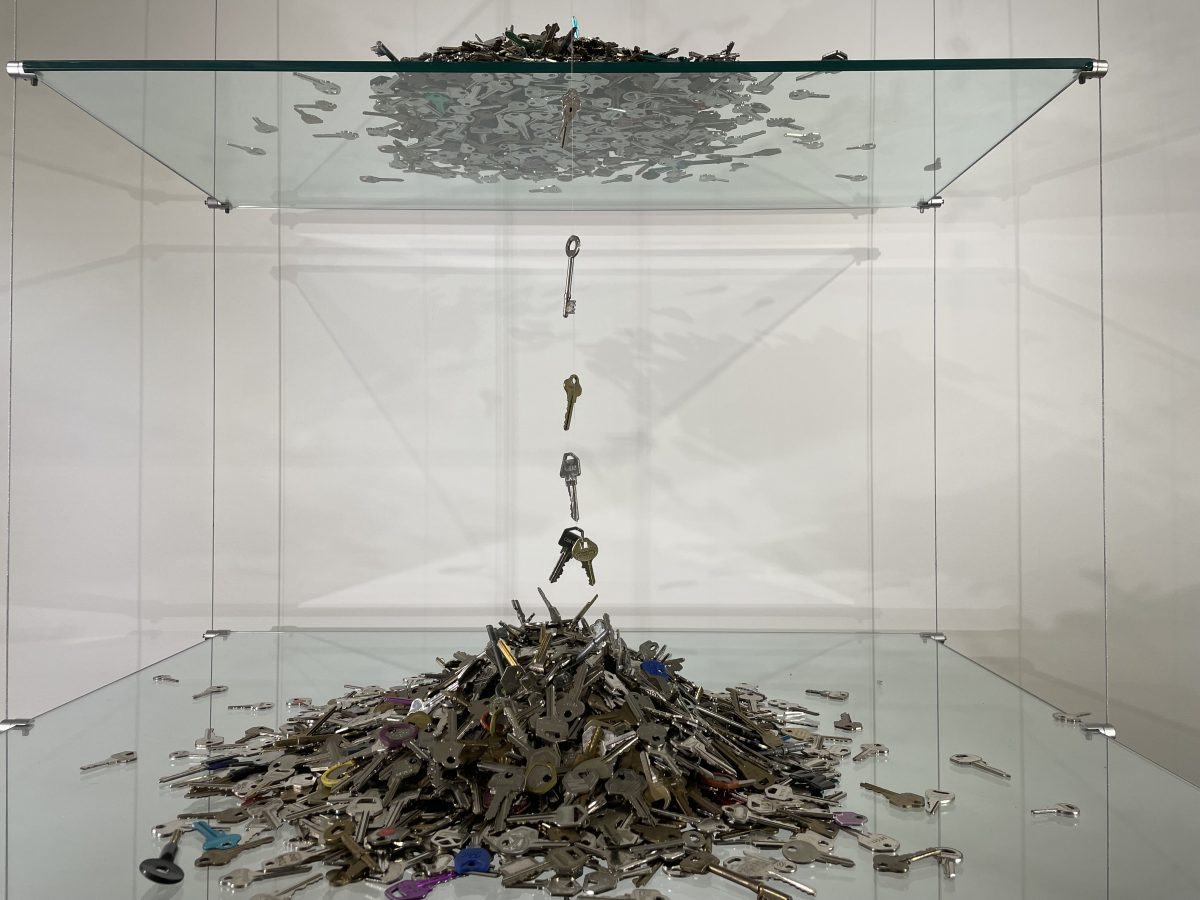
Piles of keys demonstrate the scope of the Mr Fluffy drama. Photo: G Jacobs.
The exhibition features a newly created video piece with personal accounts from Canberra residents impacted by the decades-long saga. It’s a story of cold, post-war houses, cheap and effective asbestos imported from South Africa and, horrifyingly, children playing in the loose fill as Mr Fluffy went from house to house in Canberra suburbs offering his services.
Imagery, artworks, retrieved objects, background information and text stories amplify the sadness of Fluffy residents and explain the choices made by government at every level between 1968 and the current day.
In total, 1011 houses were demolished although a tiny handful remain in owners’ hands.
“The thousands of keys from demolished houses due to the ‘Mr Fluffy’ crisis had a profound effect on me. More than any other material culture remaining from the properties impacted by ‘Mr Fluffy’ asbestos insulation, the keys – and the weight of numbers – brings home the scope of this Canberra story,” says Ross Heathcote, curator of the ‘Mr Fluffy: our voices’ exhibition.

Mr Fluffy’s insulation was cheap and widely used across Canberra. Photo: G Jacobs.
Alongside the keys are fragments of a mosaic artist Kim Grant had created in memory of her father, a sculpture made by artist John Topfer to reflect his family’s resilience through the 2003 bushfires, and a pen and ink drawing commissioned by Ermelindo Maculan of his demolished Duffy home.
The video installation tells the stories of many of those most affected by the acquisition and demolition process, which prompted deep anger among some, who felt their houses were being acquired for the government to profit, while others were relieved there was a market solution for otherwise unsaleable residences.
There are poignant notes on the walls from visitors: “I sometimes wish I could visit my childhood home. It’s sad to see it no longer standing”, reads one. “Last I saw it was behind a metal fence, unable to even walk in my front garden”.
Another records post-demolition experiences: “We were lucky enough to purchase a Mr Fluffy block in Curtin. We were very aware of the trauma that the former owners must have experienced, and with this in mind, we have built a sustainable house that sits happily on the block.
“We have spoken with our neighbours about the previous owners and the process of demolition. Your block lives on”.
‘Mr Fluffy: Our voices’ is at the Canberra Museum and Gallery until 1 October.













